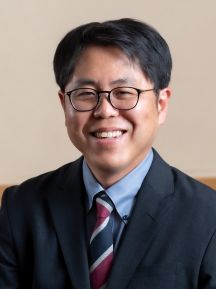
TANIGUCHI Takaaki
Principal Researcher, Functional Nanomaterials Group, Reserch Center for Materials Nanoarchitectonics, National Institute for Materials Science
Research field
2D Nanomaterials, Catalysts, Semiconductors, Functional Coating, Green processing
Research outline
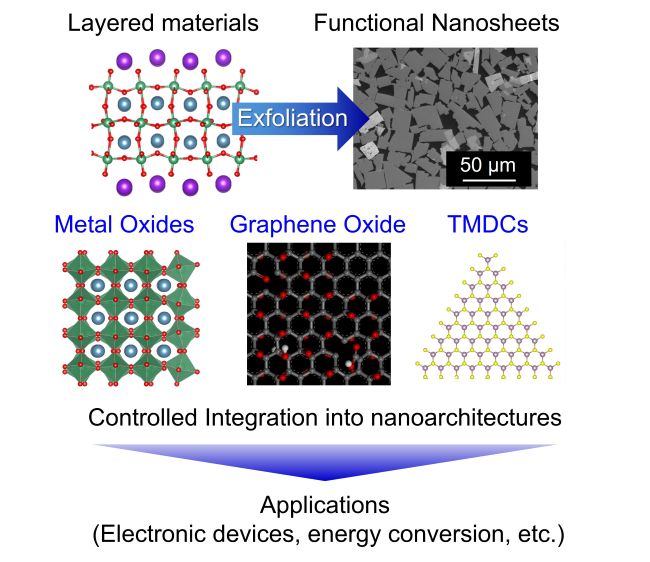
Recently, a wide range of two-dimensional (2D) nanomaterials, including graphene, oxides, sulfides, and carbides, have been intensively developed. Our research focuses on the environmentally friendly synthesis of inorganic nanosheets via solution-based methods, their integration into nanoarchitectures through colloidal processing, and applications.
Research Interests
Nanosheet, Oxides, Graphene, Chalcogenides, Solution-processing, Interface
Assigned university/courses
Institute of Science Tokyo School of Materials and Chemical Technology
Doctoral Program in Materials Science and Engineering
Message to prospective students
Research on two-dimensional nanosheets is rapidly progressing at the forefront of emerging materials science. We strive to offer passionate young researchers opportunities to pioneer novel material synthesis, uncover new phenomena, and explore material functionalities, thereby fostering their development into globally leading scientists.
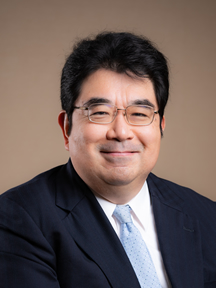
MORI Takao
Field Director, Nanomaterials Field, Research Center for Materials Nanoarchitectonics, National Institute for Materials Science
Research field
thermoelectric materials, functional materials, magnetic materials, semiconductor
Research outline
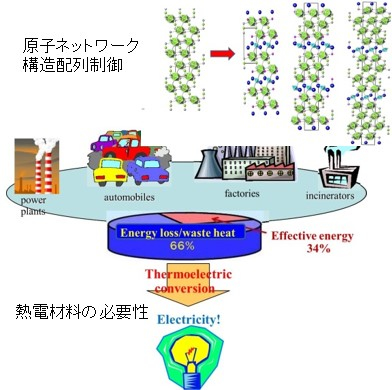
More than half of mankind’s consumed gas and oil is lost as waste heat. We focus on developing highly useful energy & environment materials, like thermoelectric and inorganic functional materials, through atomic network control, nano/microstructure control, synthesis of new materials with strong structure-property relationships from their topology.
Research Interests
inorganic materials, thermoelectric materials, thermal management materials, heusler alloys, structure-property relationship
Assigned university/courses
University of Tsukuba Graduate School of Pure and Applied Sciences
PhD : Materials Science and Engineering
MSc : Materials Science
PhD : Materials Innovation
MSc : Materials Innovation
Message to prospective students
For IoT powering and energy saving for the planet, let's develop the world’s first wide-ranging applicable thermoelectric materials and other highly functional inorganic materials together!
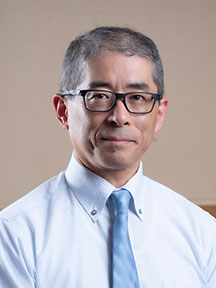
YAMAURA Kazunari
Group Leader, Quantum Solid State Materials Group, Research Center for Materials Nanoarchitectonics, National Institute for Materials Science
Research field
functional materials, magnetic materials, superconductivity, structural analysis, crystal growth
Research outline
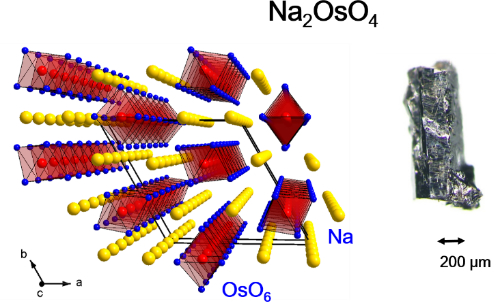
Change the crystal structure and chemical composition of inorganic materials in various ways, improve quantum functionality such as high-Tc superconductivity, electronic properties, magnetism, half-metallicity, or topological properties, explore their theory, and pioneer new engineering materials.
Research Interests
strongly correlated electrons material, quantum solid-state material, high-temperature and high-pressure synthesis, perovskite, 5d electrons oxide
Assigned university/courses
Hokkaido University Graduate School of Chemical Sciences and Engineering
Materials Chemistry and Engineering Course
Message to prospective students
With the goal of developing new materials characterized by excellent functionality, for example, the combination of elements and changes in crystal structure of transition metal oxide are examined under various synthesis conditions. In the doctoral program, students acquire advanced experimental techniques and work on problem based on their own ideas.
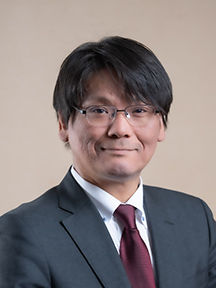
KUWATA Naoaki
Group Leader, Solid State Battery Ionics Group, Research Center for Energy and Environmental Materials, National Institute for Materials Science
Research field
battery materials, solid state ionics, solid state physics, electrochemistry
Research outline
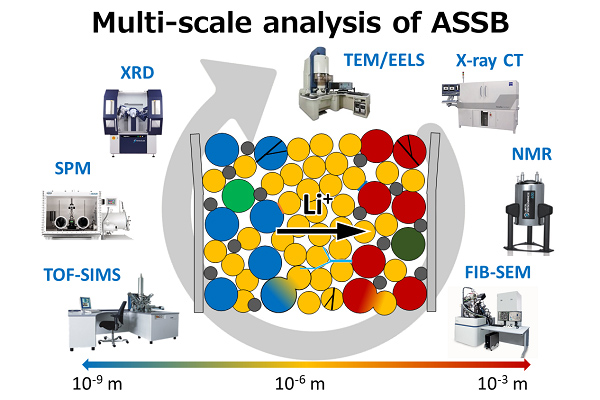
We investigate a mechanism of ion dynamics in solids and its application to all-solid-state batteries (ASSB). Diffusion coefficient of lithium ions in solids can be elucidated using techniques such as secondary ion mass spectrometry and NMR. Multi-scale analysis of ASSB using various analytical instruments is used to study the degradation mechanism.
Research Interests
all-solid-state battery, thin-film rechargeable battery, secondary ion mass spectrometry, nuclear magnetic resonance, operand analysis
Assigned university/courses
Hokkaido University Graduate School of Chemical Sciences and Engineering
Materials Chemistry and Engineering Course
Message to prospective students
We are studying ion dynamics in all-solid-state battery materials based on our original analysis techniques. We welcome those who are interested in new materials and new phenomena, and those who want to do basic research on all-solid-state batteries.
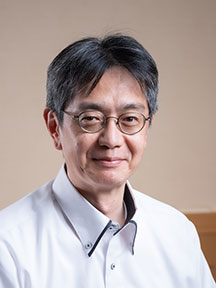
NAGAO Tadaaki
Group Leader, Photonics Nano Engineering Group, Research Center for Materials Nanoarchitectonics, National Institute for Materials Science
Research field
materials physics, surface science, nanophotonics, heat transfer engineering
Research outline
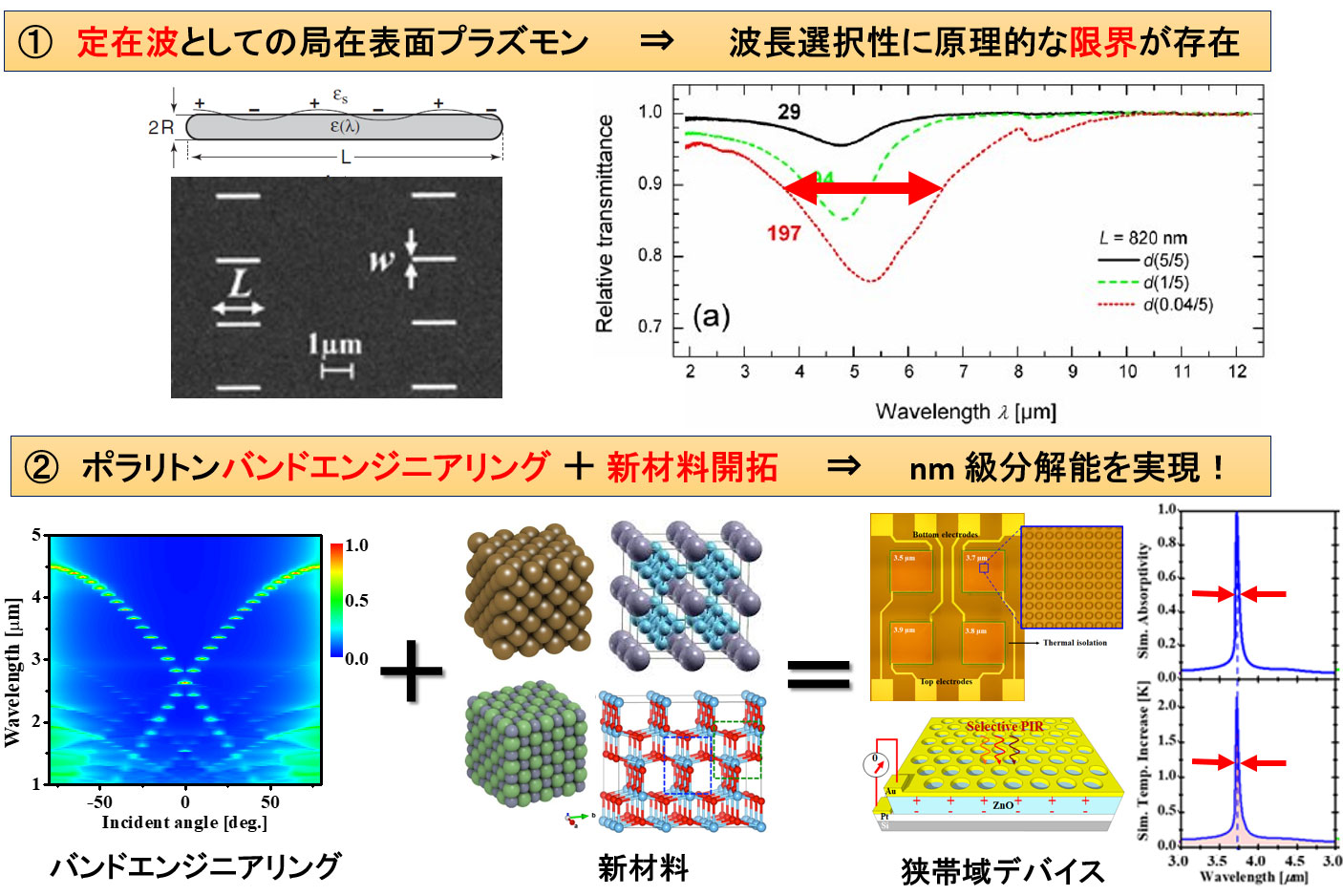
Light can be confined and changes its nature flexibly in nanometer to atomic-scale nanomaterials if we appropriately chose materials and their surface nanostructures. Our group focuses on the study of novel functionalities originating from electronic excitations and photonic properties in nanometer-scale structures/interfaces together with developing new materials, devices, and spectroscopy techniques.
Research Interests
plasmonic materials, semimetals/metalloids, phonon, infrared emitters, infrared recognition sensors
Assigned university/courses
Hokkaido University Graduate School of Science
Department of Condensed Matter Physics
Message to prospective students
Our group is composed of staff members from various backgrounds in science and from companies. More than half of the members are non-Japanese, and we have various opportunities for collaborations and presenting at conferences. Since our PhD candidates are requested to setup their own experiments within three years, we support learning through mutual collaborations along with working by oneself to establish an in-house original research.
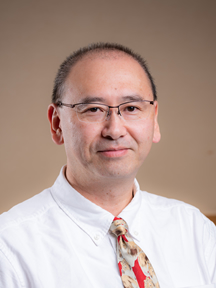
SHIMAMURA Kiyoshi
Field Director, Optical Materials Field, Research Center for Electronic and Optical Materials, National Institute for Materials Science
Research field
functional materials, optical materials, semiconductor, dielectrics
Research outline
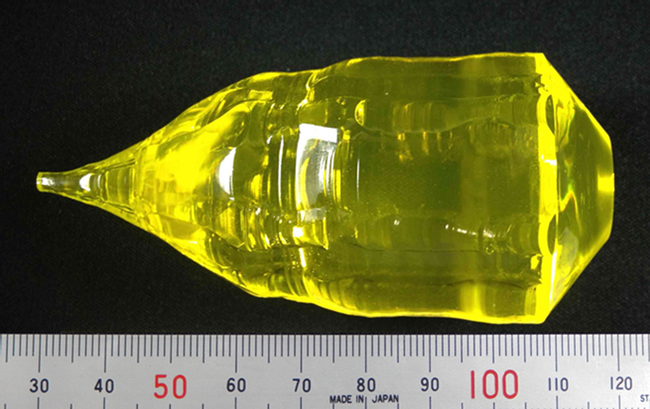
Research on the design, bulk crystal growth, and characterization of new single crystal materials is performed, aiming at the fabrication of next generation of single crystal based devices. A wide range of crystals such as laser and nonlinear optical crystals, magneto-optical crystals, scintillator/dosimeter, widebandgap semiconductor, piezoelectric and ferroelectric crystals are the main targets of the research.
Research Interests
single crystal growth, phosphor, scintillator, semiconductor, dielectric-piezoelectric material
Assigned university/courses
Waseda University Graduate School of Advanced Science and Engineering
Department of Nanoscience and Nanoengineering
Message to prospective students
Let’s challenge Ph.D. together with beautiful and fantastic bulk single crystals !
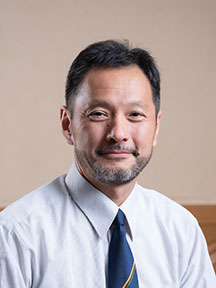
SUZUKI Tohru
Group Leader, Optical Ceramics Group, Research Center for Electronic and Optical Materials, National Institute for Materials Science
Research field
structural materials, functional materials
Research outline
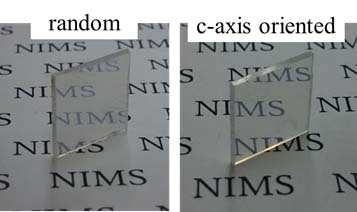
Designing and preparing nano-structured inorganic materials and inorganic/organic composites are studied for functionality and reliability in environment and energy fields. We focus on crystalline orientation and laminar structure by using a magnetic field and an electric field. Transparent ceramics, solid electrolyte, structure ceramics, etc.
Research Interests
crystal orientation, strong magnetic field, powder processing, ionic conductor, transparent ceramics
Assigned university/courses
Waseda University Graduate School of Advanced Science and Engineering
Department of Nanoscience and Nanoengineering
Message to prospective students
We focus on the processing for microstructure control in functional and structural ceramics, and our research target is development of the advanced ceramics. We always face some problems in research, and nobody knows the answer. However, that's what makes it all the more interesting. Let’s solve the problems together.
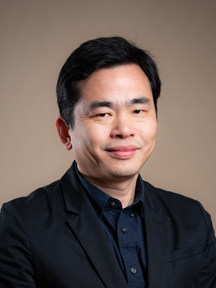
MA Renzhi
Group Leader, Functional Nanomaterials Group, Research Center for Materials Nanoarchitectonics, National Institute for Materials Science
Research field
functional materials, Nanomaterials, structural analysis, electron microscopy, electrochemistry
Research outline
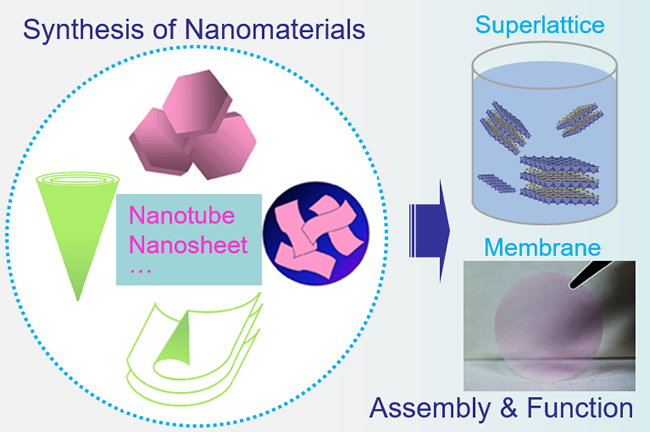
We exploit the most advanced chemical synthesis technologies toward rational design and function exploration of new nanomaterials represented by nanotubes and nanosheets. By assembling and integrating these nanoscale building blocks, we are striving to achieve novel multi-functions for applications in batteries, ion conductors and catalysts, etc.
Research Interests
nanosheets, nanotube, battery, catalysis, ion conduction
Assigned university/courses
Waseda University Graduate School of Advanced Science and Engineering
Department of Nanoscience and Nanoengineering
Message to prospective students
As exemplified by the worldwide interest attracted on carbon nanotube and graphene, nanoscience has become one of the most exciting and rapidly developing research fields. Students who are fascinated by nanomaterials which are invisible to human eyes and dreaming to challenge the world are welcome.
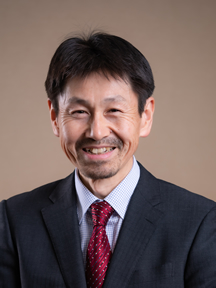
MORITA Koji
Group Leader, Polycrystalline Optical Material Group, Research Center for Electronic and Optical Materials, National Institute for Materials Science
Research field
Structural materials, high temperature materials, optical ceramics
Research outline
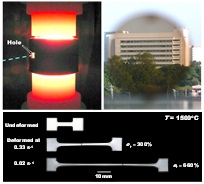
Our purpose is to realize high and multifunctional ceramic materials by harmonizing fundamental and application researches on functional properties (high temperature, optics, structural properties, etc.) and on nanostructural characterization. We focus especially on the researches on the developments of new synthesis methods for high-performance transparent ceramics, to develop high temperature structural ceramics and so on.
Research Interests
Ceramics, Transparent Ceramics, Sintering, High Temperature Deformation, Current effect
Assigned university/courses
Kyushu University Graduate School of Engineering
Department of Materials
Message to prospective students
Important is not just to do research as directed. Let’s acquire own ability to make your own research plan and to execute it systematically.
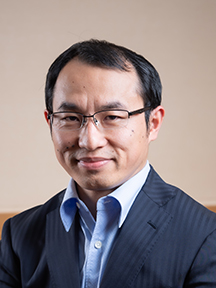
KUBOTA Kei
Senior Researcher, Battery Materials Analysis Group, Research Center for Energy and Environmental Materials, National Institute for Materials Science
Research field
functional materials, battery materials, solid state ionics, structural analysis, electrochemistry
Research outline
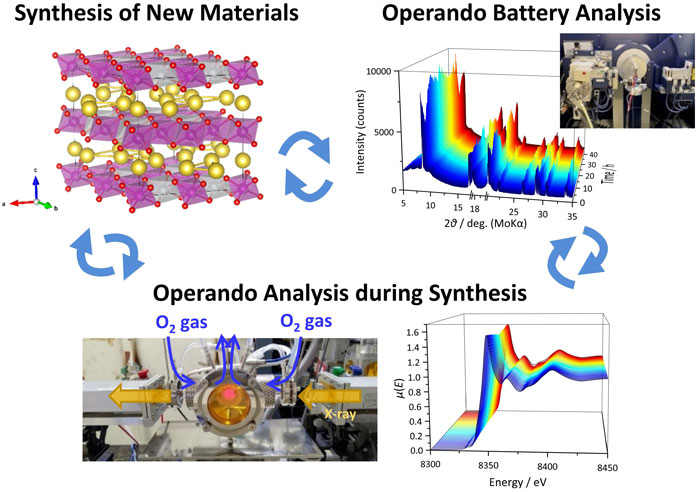
For further developments of lithium-ion and sodium-ion batteries, we synthesize novel electrode and solid-electrolyte materials. In addition to the electrochemical evaluation of the materials, operando analysis of the materials during charging and discharging of the battery cell and during synthesis is a powerful tool for understanding and developing novel materials.
Research Interests
battery materials, lithium-ion batteries, sodium-ion batteries, material synthesis, operando analysis
Assigned university/courses
Hokkaido University Graduate School of Chemical Sciences and Engineering
Materials Chemistry and Engineering Course
Message to prospective students
Electrode and electrolyte materials are the key to the essential performance of rechargeable batteries. Let’s synthesize new battery materials together.
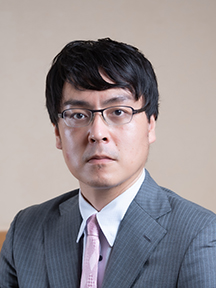
SHIMIZU Takao
Independent Scientist, Research Center for Electronic and Optical Materials, National Institute for Materials Science
Research field
dielectric materials, thin film growth, synchrotron X-ray analysis, scanning probe microscopy
Research outline
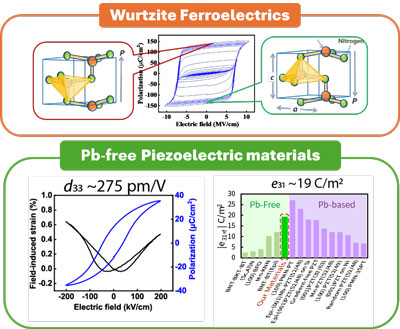
Our group studies on the development and enhancement of the properties via controlling of the domain structure and the searching novel ferroelectric materials in thin film ferroelectrics. Our goal is the next-generation ferroelectric materials through the fabrication of the new ferroelectric materials and characterization their properties and structure.
Research Interests
HfO2-based ferroelectrics, Wurtzite-type ferroelectrics, perovskite-type structure, domain structure
Assigned university/courses
Institute of Science Tokyo School of Materials and Chemical Technology
Doctoral Program in Materials Science and Engineering
Message to prospective students
Ferroelectric materials are quite attractive, because of their potential to be applied to sensors, actuators, and non-volatile memories. Our research gives a chance to succeed for students with various backgrounds, because we exploit various methods including thin film preparation, characterization of electric and mechanical properties, and advanced analysis techniques.

 NIMS researchers directory, SAMURAI
NIMS researchers directory, SAMURAI
 How to
How to  Send email
Send email